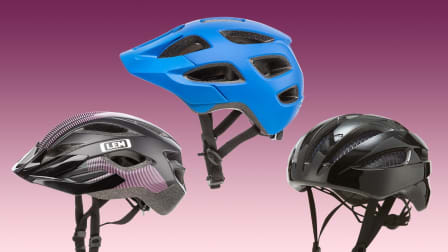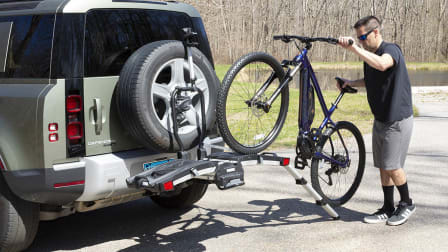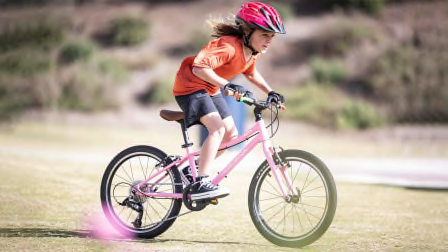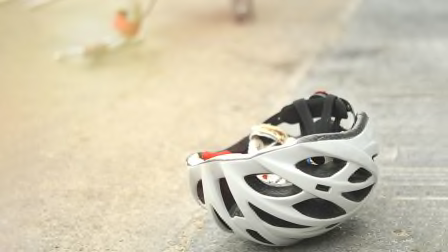Bike Riding Safety Tips for New and Experienced Riders
Here's how to stay safe while cycling
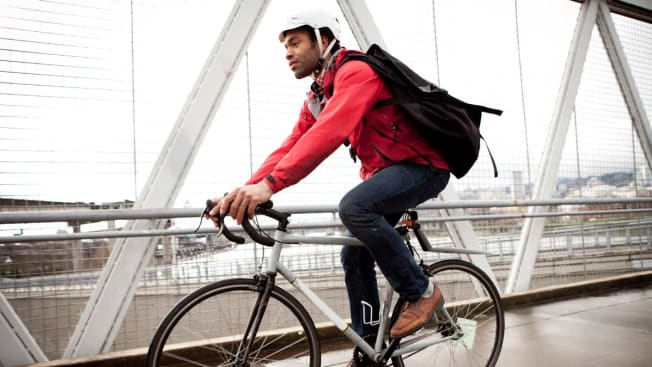
The global coronavirus pandemic and associated lockdowns upended the bicycling world. People turned to cycling in record numbers in order to replace indoor exercise, spend more family time together, or commute and travel without being around too many people. Bicycles were in scarce supply as new cyclists snapped up whatever they could get their hands on.
Following a sharp increase in 2020, bicycle traffic today is closer to 2019 levels, according to Eco Counter, a company that collects data on pedestrian and cyclist traffic worldwide. According to the group, bicycle traffic in the U.S. increased 2 percent between 2023 and 2024. That means even more cyclists are at risk of a crash involving vehicles or other cyclists.
According to a survey conducted every two years by People for Bikes, a bicycling advocacy organization, 112 million Americans (35 percent) over the age of three rode bikes at least one day in 2024 (PDF). That is an increase over 2022 (34 percent) and 2020 (33 percent) when many people took up cycling because they either worked at home or had their work hours severely curtailed because of the COVID-19 pandemic. 71 million Americans (22 percent) rode at least six days in 2024.
Pre-Ride Safety Check
Of course, you need to make sure that the bicycles you and your family are riding have been maintained and are in safe working condition. But you also need some specific safety equipment.
Helmet
According to the Insurance Institute for Highway Safety, the most serious injuries in most accidents that lead to deaths are to the head. This highlights the importance of wearing a bicycle helmet. Helmet use has been estimated to reduce the odds of head injury by 50 percent and the odds of head, face, or neck injury by 33 percent.
But helmets don’t last forever. Consumer Reports recommends replacing a helmet every five years—or immediately if you’ve taken a spill and hit your head while wearing it, or if the helmet shows damage like cracking or delamination of the shell or inner foam layer. If you’re unsure of the age of your helmet, or if it has been a while since you’ve bought a helmet for your kids, check CR’s bicycle helmet ratings and buying guide.
You can find helmets at your local bike shop or order one online. If you already have one, check out how to make sure it fits properly. Before using the helmet, verify that it meets Consumer Product Safety Commission standards.
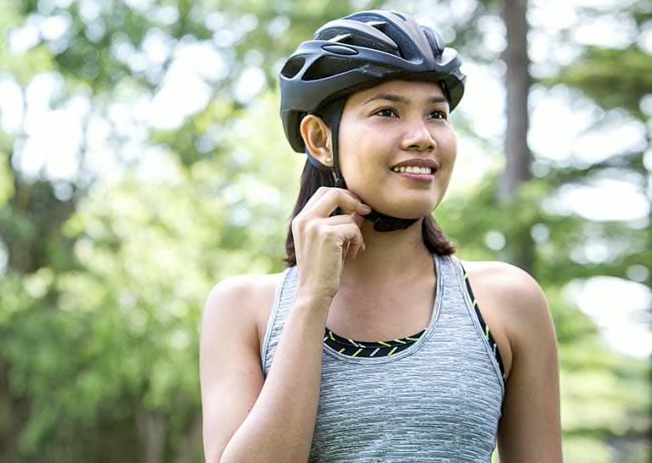
Photo: Consumer Reports Photo: Consumer Reports
Lights
It’s best to always use front and rear lights, even during the day. This isn’t to light your way; rather, it’s to make you more visible during daylight hours and especially at dusk and dawn. A forward-facing blinking white light will make you more noticeable to oncoming traffic, while a rear-facing blinking red light will make you visible to traffic behind you. But even with these lights blinking and strobing, assume that motorists won’t see you—even if you have the right of way. If you have a need to ride before the sun rises or after it sets, you’ll need high-powered lights to illuminate the road.
Clothes
Wear easily visible cycling clothing, such as a bright yellow, red, orange, or blue jacket or vest, to improve your visibility. Think brighter colors rather than blacks or grays, which could be easily overlooked or lost in shadows. Some cycling clothes also come with reflective strips. The key is to be visible by contrasting with your environment. It isn’t a rolling fashion show.
Gloves
A good pair of cycling gloves serves a number of purposes. First, it helps you keep your grip on the handlebars even if you are sweating or riding in the rain. Second, in the event of a fall, gloves will protect your palms; it’s natural to put your hands out when falling, and the impact can scrape them up. Finally, gloves help relieve pressure from the palms and prevent blisters from forming. But it’s okay to ride without them if you’re more comfortable that way.
Eyewear
To protect your eyes from dirt, debris, and sun glare, you can wear safety glasses or sunglasses marketed and sold as cycling-specific ones. Clear (untinted) lenses are good when it’s raining because they’ll protect your eyes but won’t be too dark. Some glasses let you swap in different lenses, so you can choose the appropriate ones depending on your conditions. You can also get prescription lenses made for these.
Out on the Road
Keep in mind that safety doesn’t just mean protective equipment; it’s also about how cyclists interact with motorists, pedestrians, and other cyclists.
Obey the law. The League of American Bicyclists reminds riders, “You have the same rights and responsibilities as drivers.” This means that cyclists have to follow all traffic laws and obey street signs, signals, and road markings. Ride in the same direction as traffic when cycling on roadways. Running stop signs and other traffic control devices puts you and other cyclists, pedestrians, and motorists in danger. (See the league’s guide to the rules of the road.)
Stay alert. Remember that potholes, bottles, glass, curbs, and sewer grates pose a bigger risk to cyclists than they do to cars. Keep your eyes up and look far enough ahead of you to make an evasive maneuver or stop in time to avoid a crash. Anticipate that someone may open their parked car door when you’re riding past.
Use hand signals. The only way cyclists can interact with traffic is by using hand signals. Both the National Highway Traffic Safety Administration and the League of American Bicyclists say that it’s the law to use proper hand signals and that doing so communicates your intentions to turn or stop, making it safer for everyone.
Be predictable. While it’s necessary to avoid obstacles, don’t weave in your travel lane. Inattentive riding and random movements can confuse or unnerve drivers. They may slow down and avoid passing you because they don’t know what you’re doing. Or they may aggressively pass, putting themselves, you, and others at risk.
If you do have to avoid an obstacle like a pothole or debris, use a hand signal—if possible—to alert following vehicles that you may have to enter their travel lane.
Ride single file. Stay single file no matter where you’re riding. This allows traffic to give you 3 feet of space when passing without having to veer into the oncoming lane and lets other cyclists pass you safely on the road. If it’s legal to ride on the sidewalk in your town or city, keep in mind that riding two or three abreast on the sidewalk crowds out pedestrians.
Skip the tech. Whether you’re commuting or interval training, keep off your phone. Headphones and earbuds hinder the ability to hear traffic, and they can become a distraction if you need to take a hand off the handlebars to change the volume, choose another song, or accept/reject a call on your phone. And just like driving, texting is a major distraction. One slight wobble and even the most experienced cyclist will go down in a heap. You can attach a small saddlebag under the seat or to the frame to stash a phone. This not only keeps it from being a distraction but also prevents you from accidentally dropping the phone. If you insist on listening to music while riding, consider a bone conduction model. These headphones don’t muffle external noise.
Be aware of your speed. It’s important for riders who have moved to an electric bicycle (e-bike) to be aware of their speed. Some models can easily travel at 20 mph or more, speeds that would be hard for a new cyclist to achieve when pedaling a conventional bicycle. This adds another level of risk to the equation. Higher speeds mean the rider has less time to slow down or stop. The results of even low-speed crashes—especially when cars and trucks are involved—can be painful and even fatal. A 2024 study by The Journal of the American Medical Association (JAMA) found that e-bike injuries increased by more than 99 percent annually between 2017 and 2022, from 8,566 to 56,847.

















